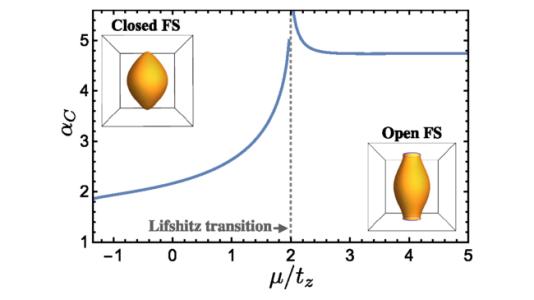
Scientific Achievement
We show that in clean superconductors under strong magnetic field, quantum effects can generate a nonuniform state, in which strength of superconductivity is periodically modulated along the field direction.
Significance and Impact
This work demonstrates that FFLO states exist even in materials with small Zeeman energy, thereby revising the accepted picture of the true ground state of very clean superconductors in high magnetic fields.
Research Details
- We investigated the influence of Landau quantization on the superconducting instability for a pure layered superconductor in the magnetic field directed perpendicular to the layers.
- We found that the quantization corrections to the Cooper pairing promote the formation of the FFLO state at the temperature proportional to the ratio of the superconducting transition temperature squared and the Fermi energy.
Argonne National Laboratory seeks solutions to pressing national problems in science and technology. The nation’s first national laboratory, Argonne conducts leading-edge basic and applied scientific research in virtually every scientific discipline. Argonne researchers work closely with researchers from hundreds of companies, universities, and federal, state and municipal agencies to help them solve their specific problems, advance America’s scientific leadership and prepare the nation for a better future. With employees from more than 60 nations, Argonne is managed by UChicago Argonne, LLC for the U.S. Department of Energy’s Office of Science.
The U.S. Department of Energy’s Office of Science is the single largest supporter of basic research in the physical sciences in the United States and is working to address some of the most pressing challenges of our time. For more information, visit https://energy.gov/science.